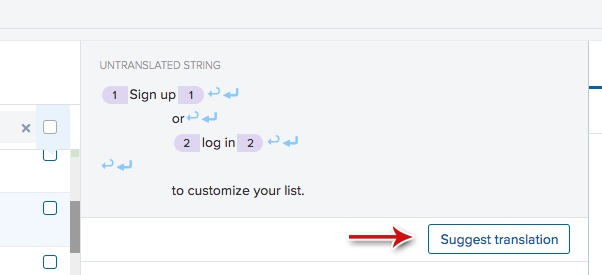Translation crowdsourcing emerged when online community develops in a fast pace with a huge volume of online content generated. It is faster than traditional translation, because it involves a large translators community. It is with more human-touch than machine translation, which is better dealing with uniform texts. These are also the reasons why some corporations love to leverage volunteer resources for certain translation projects.
Some examples include Facebook’s translation app, Twitter, and Translators Without Borders. For different organizations, the meaning and benefits of translation crowdsourcing might be different. As for for-profit organizations, engaging users in the process of product localization can increase user loyalty and expand its exposure in the target market. In addition, crowdsourcing can also bring them higher productivity compared with traditional means and shorten their time-to-market. For nonprofit organizations such as TWB, volunteers are the pillars of its operation, and translation crowdsourcing is an important way to expand their community and spread their missions.
However, translation crowdsourcing is not just as handy as it looks. Managing a huge global community requires strategies that are different from traditional translation management. Generally speaking, there are four major parts to consider concerning with the translation process: cost, time, human resource and quality. Facebook invests a lot to build a collaborative translation platform for volunteers to streamline the process. Thus, the cost of translation crowdsourcing is not just as “free” as you may have thought. How to ensure the deadline is met and encourage volunteers to finish translations is another important issue to consider. This also has to do with how you motivate the volunteers by understanding their needs. Depending on their interests, you may list their names in the contributors list and try to make their API easy and flexible to use. Because there will be a huge amount of text to review and most of the texts do not necessarily have to be refined, there can be automated QA processes to control the quality to a certain level.
There are companies build their own translation crowdsourcing platforms, like TWB and Facebook. There are also some using services from TMS like Smartling, Transifex and Lingotek. Here are some key features of Transifex’s crowdsourcing translation. It proposes two ways of translation. One is the normal translation-review process. Another is to gather suggestions from contributors and automatically apply the most voted one as the translation, and this is called the crowdsourcing mode.

Suggest translations | Source: Transifex

Voting on Suggested Translations | Source: Transifex
Transifex also suggests companies create style guides for volunteers to follow. It propoeses that communication is pivotal to engage volunteers, and a discussion/announcement system would benefit greatly for both volunteers and translation managers. According to Transifex, recognizing top contributors is important and would make volunteers feel appreciated, thus promoting a good collaborative relationship. Tips for organization to engage the community inclusing send swags, holding gatherings and inviting them for office visits etc.
References:
https://docs.transifex.com/guides/crowdsourcing-translations
https://docs.transifex.com/translation/suggesting-translations-for-crowdsourced-projects
“Facebook Taps Users to Create Translated Versions of Site” by Michael Arrington, TechCrunch, January 21, 2008
“Can Companies Obtain Free Professional Services through Crowdsourcing? ” by Adam Wooten, DeseretNews.com, February 18, 2011
“People-powered Translation at Machine Speed” by Jessica Roland, MultiLingual, January 2014


You must be logged in to post a comment.